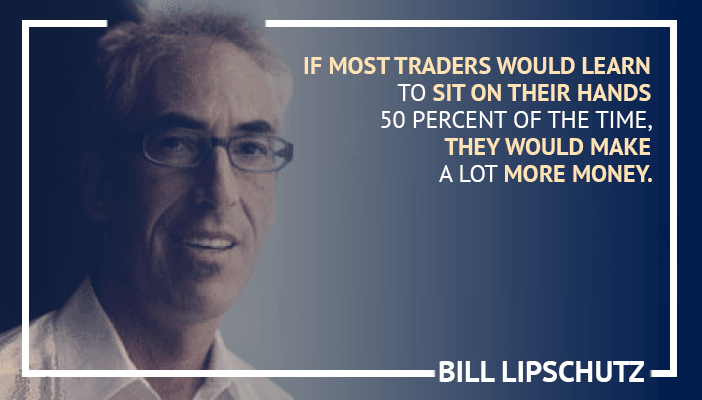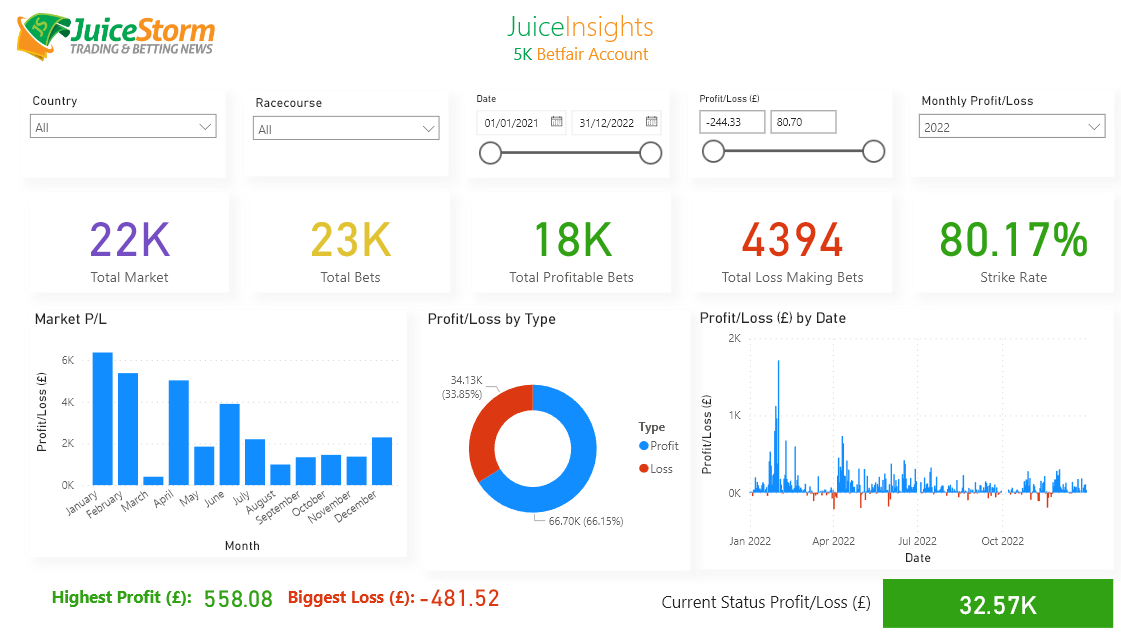Trading Horses – Basic Tips
I thought it might be an idea to set out some of the basics of trading horses. I am not a pro trader, I am a relative novice, but over the past year I have made consistent small profits on trading pre-race horses, and I feel that my experience may be of benefit to people thinking of starting trading.
The first thing to say is that trading of any sort is not risk free – you can lose money. If you follow the guidelines here you probably won’t lose very much, but you are not guaranteed to win.
General trading advice
For all trading, not just horses, I strongly advise the following:
Set aside a “bank” (I started with £100) that you can afford to lose, and treat it as spent. Most novice traders lose a bank or 2 before they learn enough to make a profit, if they ever do.
Open a separate Betfair account for trading only, to save you from getting your bank muddled up with other offers you might be doing. Betfair do not mind this.
Start with very small stakes. Many of the trading videos you will see are using large stakes like £200. These people are experienced traders and have probably chosen their videos carefully. It is very easy to look like a great trader after the event! You are far less likely to panic if things start to go wrong if your maximum risk is £5 rather than £200, and you can always increase your stake gradually as your bank and confidence grow.
Trading software
Trading on the Betfair website is possible, particularly for the slower moving markets like football. For pre-race horses I consider some sort of trading software essential. You can get upto 20 refreshes per second (the maximum allowed by Betfair before you start to incur data charges), although this does depend a bit on the API and your internet connection. Trading software also enables one-click betting, which makes the whole process much faster.
There are several trading softwares available, most offering a free trial. I must admit I have not tried most of them, having started off with BetTrader, liked it and moved to Evolution when they developed it (I was one of their beta-testers). I like to stick with what I know, and it suits my trading method, but other people may find one of the others better. The features I particularly like about Evolution are the candlestick graphs and the one-click hedge figures on the ladder.
The enlarged section below shows the green and red hedge figures better – if you click on one of those it places the correct amount to hedge for the figure shown, so just after I took this screenshot I clicked on the green 0.16 at 8.6 for an instant 16p profit. The candlestick graphs to the left of each ladder show each bet that is at a different price from the last one, with a green tip if the price was higher and a red one if the price was lower. These bets may be as small as 1p – the value of the last bet is shown in the coloured section of the ladder, £1 at 8.6 on this horse, the yellow colour meaning this was at the same price as the previous bet. The numbers on the left of the graphs are the amounts of money matched at that price (in £ks). I find the information shown in this screenshot is all I need to know.
You can see that I like to lay first, but this is personal taste. This was done about 20 minutes before the race, so the liquidity isn’t great. Things move much faster and there is more money available nearer to the off, but that also makes it harder to tell what is likely to happen.
TV Pictures
If you have Sky news and events package you can get At the Races free on channel 415. Racing UK (channel 432) costs about £20 a month. These 2 channels between them cover every UK and Irish race, every day. I find it is useful to have the TV on even if I am not looking at it, because it alerts me to likely market movements from comments by trainers, horses sweating or running away going to the start, etc. It also lets you know if there is likely to be a delay to the start. Be aware that satellite channels are about 5 seconds delayed – you can see the delay if you have the same terrestrial channel on analogue on one TV and digital on another at the same time.
In Running Horses
My advice on trading horses in running is don’t do it. There is a 1 second delay for bets in running on the Betfair site, the pictures you can get are delayed more than those available on SIS in trading shops, and you will get murdered. Leave in running horse betting to the professionals, and always get out of any open trades before the start. If your horse gets left in the stalls or whips round and loses gound as the tapes go up the price will have shot up before the pictures reach your TV. If it makes a flying start and the favourite gets left behind it can halve in price just as fast. You can often see the price of a faller go to 1000 before your pictures show it taking off at the jump. There are people with fast pictures and bots designed to hoover these things up and you cannot compete with them. You will, however, always get matched when you are wrong.
Types of pre-race trading
There are basically 2 types of pre-race trades – scalping and swing trading. Scalping involves taking quick small profits repeatedly, usually with back and lay one tick apart. Swing trading relies on you being right about predicting the way the odds are about to move, putting in one half of the trade and waiting for the other half to match several ticks away. There is a video illustrating scalping here and one illustrating swing trading here. Of the two, scalping is far safer as losses are normally confined to one or two ticks. Swing trading will make bigger profits per trade, but also bigger losses, and the temptation to wait for the price to turn when things have gone wrong is huge, so you can end up making a very big loss indeed (relative to stake). With scalping the number one rule is get out fast if things start to go wrong. You can always put another bet in the market and you can win back a few pennies relatively easily.
The screenshot below shows what can happen if you decide to wait for the odds to come back.
This was a classic case of how not to scalp. I had placed 3x £10 lays on Ken’s Girl (right hand ladder) at 8.6, 8.4 and 7.8, with the intention of scalping for 3×25p profit if the odds dropped. The price had been stable between 8.6 and 8.8 for some time. Realistically I would expect either one or more of these not to be matched until after I had traded out the others, or to scratch a couple of these trades on the way down. In fact the odds suddenly dropped, and I tried to scratch the first bet and sat and waited for it to go back up, only to find that I had to take a loss on all 3 trades. I got 63p matched at 8.6 before it dropped, and then I panicked and backed £10 at the low point of 7.2. I managed to get the remainder matched at 7.6 and 8.2. The resulting loss of £2.12 wiped out my previous profit on the race of 79p and required 9 winning scalps to recover losses at these odds. Note however that because I am only trading with £10 (my standard stake), even a disastrous trade with 3 unmatched lays at the same time has only cost me just over £2, and some of that is covered by previous profitable trades on the race. Its hardly going to break the bank.
As an aside, this screenshot clearly shows the reason why I got caught out. I turn off auto-centre for the ladders as I find the constant up and down movement unpleasant to watch. You can see that the price on the favourite has shot up and is now matching off the screen. If I had looked at what was happening to the favourite instead of staring at the increasing red figures on Ken’s Girl, I would probably have scratched the 2 lower trades and got out of the first rather faster. Remember that the odds on different runners in the same market are connected – if one goes up something else must come down to maintain the book at around 100%. The size of the change is proportional to the odds, so a small movement at high odds on one horse will result in a much bigger movement if the opposing horse is at much shorter odds. For this reason I am reluctant to scalp horses at odds of less than 4 – I find the movements too unpredictable and sharp. This is a personal view and most professional traders scalp favourites, probably for exactly the same reason!
Scratch Trades
Trading is all about psychology and your attitude to scratch trades will make a huge difference to your level of success. If you view a scratch trade as a waste of time and a lost opportunity (particularly if the odds move in your favour after you have scratched) you will tend to sit in the market too long and lose money. If you scratch, either by removing your bet before it is matched, or by submitting another as soon as you think that things might be turning against you, there are certain to be times when this was the wrong decision, and you will notice and remember those much more than the times it saved you a loss. This is human nature, and you must learn to override it if you are going to be successful. I scratch a very large number of trades – probably over 50%, most of them before they are ever matched.
Try to develop the attitude that when you place a bet to start off a trade, it is a speculative bet which will be matched if you are lucky. It is the 2nd bet, not the first, which makes you the profit. Your first bet wants to be at a good price – a price that most people will not get. This means that a lot of the time you won’t get it either.
Losing Trades
However good you are at trading there will always be losing trades. There are times when big backers or layers come in and fling down £5000 which makes the price jump several ticks in the blink of an eye. Sometimes it comes back and sometimes it doesn’t, but unless you have good reason to believe it is “spoof money” you are best to get out straight away and take the loss. You have to learn to ignore this sort of thing – it happens. This is where treating your bank as already spent helps a lot, as you are much less likely to get upset about it. Just assess the market objectively and either place another trade or move to a different race.
The 3 Golden Rules
The golden rules of scalping are don’t take the prices that are on offer, get in at the front of the queue, and get out fast. I will expand on these and explain how I trade horses and how to avoid the more obvious traps in a bit more detail in my next article, in which I will try to answer the most frequently asked question in trading, namely “what are the best entry and exit points?”.






Comments are closed, but trackbacks and pingbacks are open.